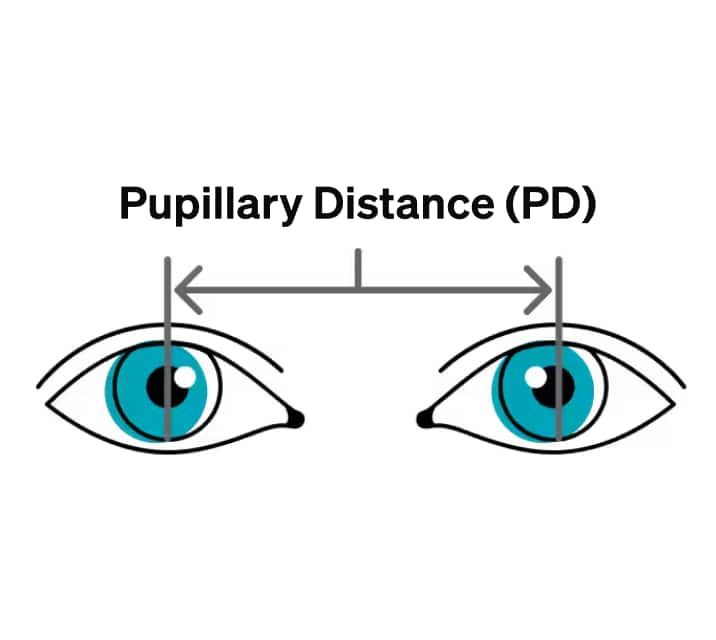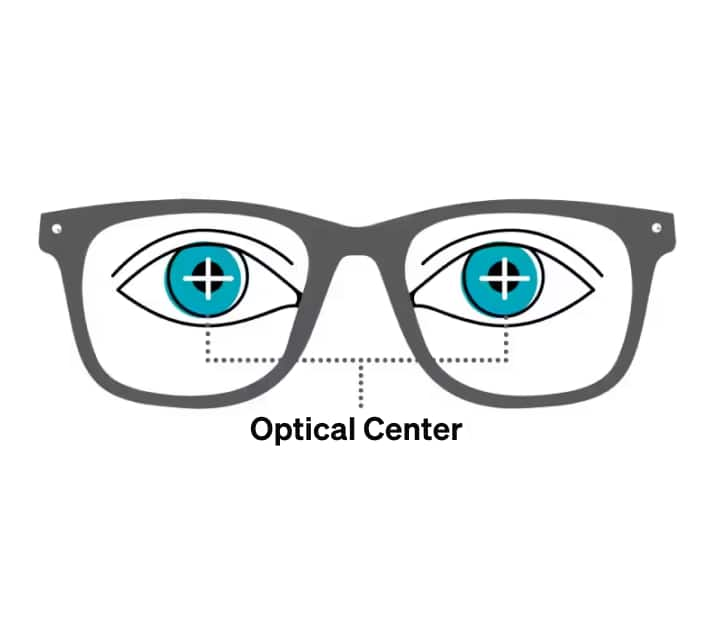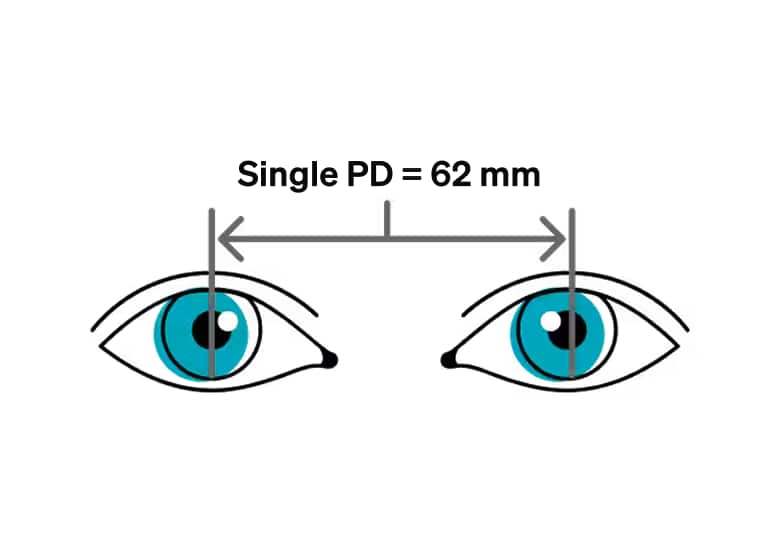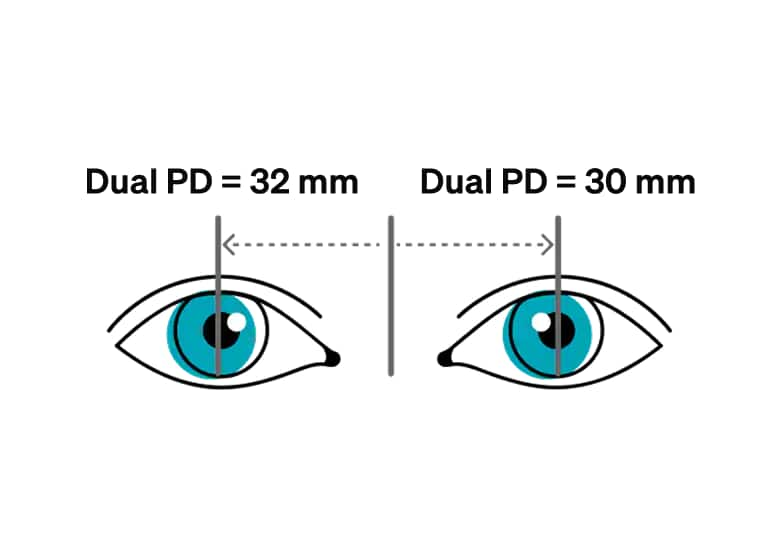How to Measure Your PD
What is pupillary distance?
Pupillary distance (PD) measures the distance between the centers of your pupils and is used to center a prescription lens accurately in your frames. Your optician will usually measure your PD or you can use our digital PD ruler to measure it quickly online.

Use our digital PD ruler?
Easily measure your pupillary distance (PD) at home. Fast, accurate, and user-friendly.
Why is it important?
Every set of prescription lenses has an “optical center”, which should align with where you look through the lens. Pupillary distance is used to determine this and should be as accurate as possible.


Single PD, or binocular PD, is the pupillary distance between the centers of your pupils.
Range of Adult PD: 54-74
Range of Child PD: 43-58

Dual PD, or monocular PD, consists of 2 numbers and is the distance between the centers of each pupil to the bridge of the nose.
Dual PD is usually written as 32/30. The first number refers to the right eye (OD), and the second number refers to the left eye (OS).
How do you calculate near PD for reading glasses?
Subtract 3 mm from your distance PD.
For example, if your distance PD is 63mm, then your near PD is 60mm.
If you use dual PD to calculate near PD, then subtract 1.5mm from each eye’s measurement.
For example, if your dual PD is 33/31mm then your near PD would be 31.5/29.5mm.


 United States
United States